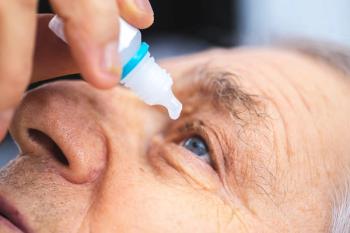
Oculis releases positive topline results from phase 2 ACUITY trial evaluating OCS-05 in acute optic neuritis
The primary safety endpoint was carried out through the percentage of patients with shift from normal (at baseline) to abnormal in any electrocardiogram (ECG).
Oculis has announced positive topline results from its phase 2 ACUITY trial of OCS-05 in patients with acute optic neuritis.
OCS-05 is a novel peptidomimetic small molecule candidate with the potential to become a first-in-class neuroprotective therapy for acute optic neuritis and other neuro-ophthalmic diseases.1 The ACUITY trial was a randomized, double-blind, placebo-controlled, multi-center trial evaluating OCS-05 administered intravenously once-daily (2mg/kg/day or 3mg/kg/day) for 5 days in patients with acute optic neuritis also receiving steroid.
The study randomized 36 eligible patients aged between 18 to 60, with recent onset of unilateral acute optic neuritis with a demyelinating origin, of which 33 patients received OCS-05 2mg/kg/day, 3m/kg/day, or placebo for 5 days in addition to steroid. According to the company, OCS-05 achieved its primary safety endpoint in addition to highlighting neuroprotective structural benefit and the ability to improve visual function in patients suffering from acute optic neuritis.1
The company stated assessment of the primary safety endpoint was carried out through the percentage of patients with shift from normal (at baseline) to abnormal in any electrocardiogram (ECG) parameter at any time from day 1 to day 15. Results from the company showed no difference in the percentage of patients with abnormal ECG parameters between the 2 treatment arms.1
Riad Sherif, MD, CEO of Oculis said in a press release from the company, “These positive safety and efficacy results from ACUITY represent a significant milestone in bringing the first potential neuroprotective treatment in ophthalmology to patients. The improvement in vision is especially encouraging, and the consistent improvement in retinal structure highlights the therapeutic potential of OCS-05 across multiple ophthalmic and neurological conditions.”
Furthermore, secondary efficacy endpoints included change in ganglion cell and inner plexiform layer (GCIPL) thickness in the affected eye measured with
In terms of the secondary efficacy endpoints results showed a 43% improvement in GCIPL thickness mean change from baseline in favor of OCS-05 (3mg/kg/day) with steroid compared to placebo with steroid at month 3 which was maintained through month 6. Additionally, a 28% improvement in RNFL thickness mean change from baseline in favor of OCS-05 (3mg/kg/day) with steroid compared to placebo with steroid at month 3 reaching 30% improvement at month 6 was also observed.1
OCS-05 has received orphan drug designation from the U.S. Food and Drug Administration (FDA) and the European Medicines Agency (EMA) for acute optic neuritis. According to the company, an Investigational New Drug (IND) application for OCS-05 has also been cleared by the FDA.
Reference:
Oculis Announces Positive OCS-05 Phase 2 ACUITY Trial in Acute Optic Neuritis, Met Primary Safety Endpoint and Key Secondary Efficacy Endpoints Opening Development Pathways as a Potential First-in-Class Neuroprotective Therapy. January 6, 2025. Accessed January 6, 2025.
https://investors.oculis.com/news-releases/news-release-details/oculis-announces-positive-ocs-05-phase-2-acuity-trial-acute
Newsletter
Want more insights like this? Subscribe to Optometry Times and get clinical pearls and practice tips delivered straight to your inbox.








































